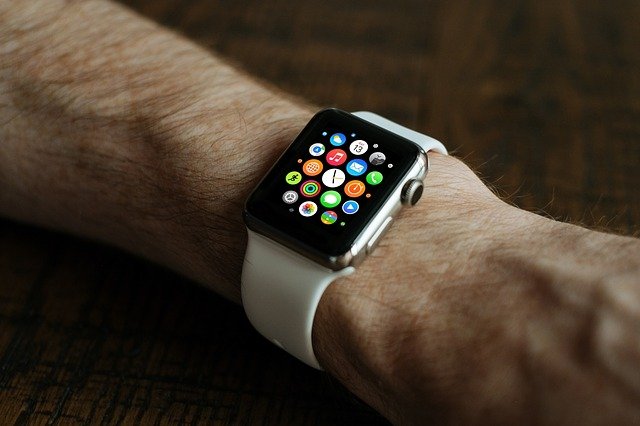Wearable technology
[edit] Introduction
Wearable technology is an article of clothing or a device that can be worn (or possibly carried as an implant) in order to transmit certain types of information. Sometimes referred to as wearables, these devices are generally used for health-related purposes.
Examples include smart watches (which can record various metrics of the wearer’s health and behaviour), smart glasses (which can provide visual imagery), smart clothing (which can provide heating, enhanced visibility or greater sensitivity), smart hearing aids and even smart jewellery (which can, for example, issue alerts to the wearer).
[edit] Wearables in construction and the built environment
Wearables can have a degree of 'intelligence' built in and can generally communicate with other devices directly or indirectly.
For construction purposes, wearable technology can be used in conjunction with navigation systems to assist with management of people, tools, equipment and so on. Animals are also able to wear devices or carry implants that can, in some cases, be relevant to the built environment. For example, a guide dog can be fitted with a wearable device to help assist its companion in and around the workplace.
Wearables can also be used in personnel distancing systems (known as PDS) which are proximity warning devices that can be fastened to an arm, belt, hard hat lanyards or wrist band. Once an exclusion zone has been programmed, these tags will sound an alarm and vibrate if the wearer gets too close to another wearer, dangerous plant, lorries and so on.
This form of wearable technology may be useful in warehouses and shops, allowing staff in a highly mobile environment to focus on their jobs and let the PDS alert them if distancing measures are being breached.
There is substantial potential for the deployment of wearables, but there are also significant technical, social and legal challenges.
[edit] Related articles on Designing Buildings Wiki
- Advanced construction technology.
- ConTech.
- ConTech in a post lockdown, pre-vaccine economy.
- Immersive Hybrid Reality iHR.
- Shaping the Future of Construction: Inspiring innovators redefine the industry.
- Smart sensor market.
- Trends towards wearables and wellbeing in buildings.
- Ubiquitous sensors to assess energy consumption and wellbeing in domestic environments.
- Wearables and wellbeing in buildings.
Featured articles and news
RTPI leader to become new CIOB Chief Executive Officer
Dr Victoria Hills MRTPI, FICE to take over after Caroline Gumble’s departure.
Social and affordable housing, a long term plan for delivery
The “Delivering a Decade of Renewal for Social and Affordable Housing” strategy sets out future path.
A change to adoptive architecture
Effects of global weather warming on architectural detailing, material choice and human interaction.
The proposed publicly owned and backed subsidiary of Homes England, to facilitate new homes.
How big is the problem and what can we do to mitigate the effects?
Overheating guidance and tools for building designers
A number of cool guides to help with the heat.
The UK's Modern Industrial Strategy: A 10 year plan
Previous consultation criticism, current key elements and general support with some persisting reservations.
Building Safety Regulator reforms
New roles, new staff and a new fast track service pave the way for a single construction regulator.
Architectural Technologist CPDs and Communications
CIAT CPD… and how you can do it!
Cooling centres and cool spaces
Managing extreme heat in cities by directing the public to places for heat stress relief and water sources.
Winter gardens: A brief history and warm variations
Extending the season with glass in different forms and terms.
Restoring Great Yarmouth's Winter Gardens
Transforming one of the least sustainable constructions imaginable.
Construction Skills Mission Board launch sector drive
Newly formed government and industry collaboration set strategy for recruiting an additional 100,000 construction workers a year.
New Architects Code comes into effect in September 2025
ARB Architects Code of Conduct and Practice available with ongoing consultation regarding guidance.
Welsh Skills Body (Medr) launches ambitious plan
The new skills body brings together funding and regulation of tertiary education and research for the devolved nation.
Paul Gandy FCIOB announced as next CIOB President
Former Tilbury Douglas CEO takes helm.
UK Infrastructure: A 10 Year Strategy. In brief with reactions
With the National Infrastructure and Service Transformation Authority (NISTA).























